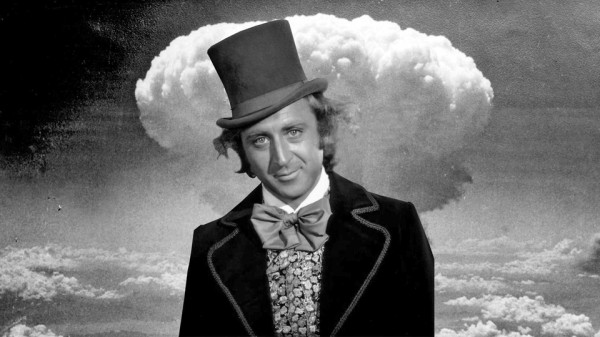By Eric Hillis

Christmas. For some it’s a time to reflect on the birth of Jesus. For others, it’s about spending quality time with the family (or pretending to enjoy the company of your in-laws).
But if you’re a movie lover, the holiday season is all about bingeing-out on your favourite festive flicks while flopped on the couch like a pregnant hippo, preferably with a glass of mulled wine in one hand and a box of extremely fattening chocolates within reach of the other.
There are certain movies that have become perennial required seasonal viewing, yet often their thematic relations to the holiday season are pretty tenuous. The action classic Die Hard can usually be found on some channel on Christmas night but, while its action may take place on Christmas Eve, it’s a film distinctly lacking in seasonal spirit. Likewise Lethal Weapon; it may open with the classic Christmas tune Jingle Bell Rock but you won’t find much goodwill to all men in its plot.
The man behind Lethal Weapon is screenwriter Shane Black, who seems to harbour an obsession with Christmas. He’s used the holiday season as the backdrop for his scripts for not just Lethal Weapon but also The Long Kiss Goodnight, Kiss Kiss Bang Bang and this year’s massive hit Iron Man 3, none of which contain the sort of storylines you might associate with the season to be jolly.
The Jimmy Stewart classic It’s a Wonderful Life may have become essential Christmas viewing, but very little of the movie actually takes place during Christmas. The film has become associated with its joyous finale, which sees Stewart run through his town yelling “Merry Christmas” after learning how much his life means to others, but most of the running time is quite dark, detailing the breakdown of America during the great depression. Because of this, the film was a huge flop on its original theatrical release in 1946, failing to break even. Just a year after the end of World War II, American audiences weren’t interested in a reminder of dark times. Decades on, however, it’s become the film most associated with the Christmas holiday.
Many of us like to use Christmas as an excuse to revisit our childhoods. This accounts for the everlasting popularity of movies like The Wizard of Oz and Willy Wonka & the Chocolate Factory. Unthinkable as it seems now, both those movies, as with Wonderful
Life, were titanic flops at the time of their release. Neither Oz nor Wonka has a Christmas setting and, given how creepy some of their content is, both are probably better suited for Halloween viewing. The Wicked Witch of the West often provides a child’s first experience of onscreen horror, and don’t even get me started on those damn flying monkeys. The munchkins may have been created to appeal to children but, as with Wonka’s Oompaloompas, they’re more likely to send your kids retreating in terror behind the sofa.
If you sum up the plot of Willy Wonka you’ll see it’s essentially the story of a strange man who uses candy to lure children to their deaths. Yet TV programmers see fit to repeatedly schedule the film for Christmas morning. Bah humbug indeed!
As you hit the sofa on Christmas afternoon, chances are you won’t be in the best physical or mental shape, so it helps to pick a movie with a lengthy running time, preferably one you’re familiar with. This means you can repeatedly nod off without worrying about missing important plot details. Epics like The Great Escape, Ben Hur and The Magnificent Seven are ideal movies to snore your way through, given their familiar plots and excessive length.
So, what makes a perfect Christmas movie? The evidence would suggest it should be at least three hours long, a flop on its original release and terrifying for children. A 180-minutes extended cut of Willy Wonka sounds just right.
Above is Gene Wilder as Willy Wonka and, left, Margaret Hamilton as the Wicked Witch of the West.



